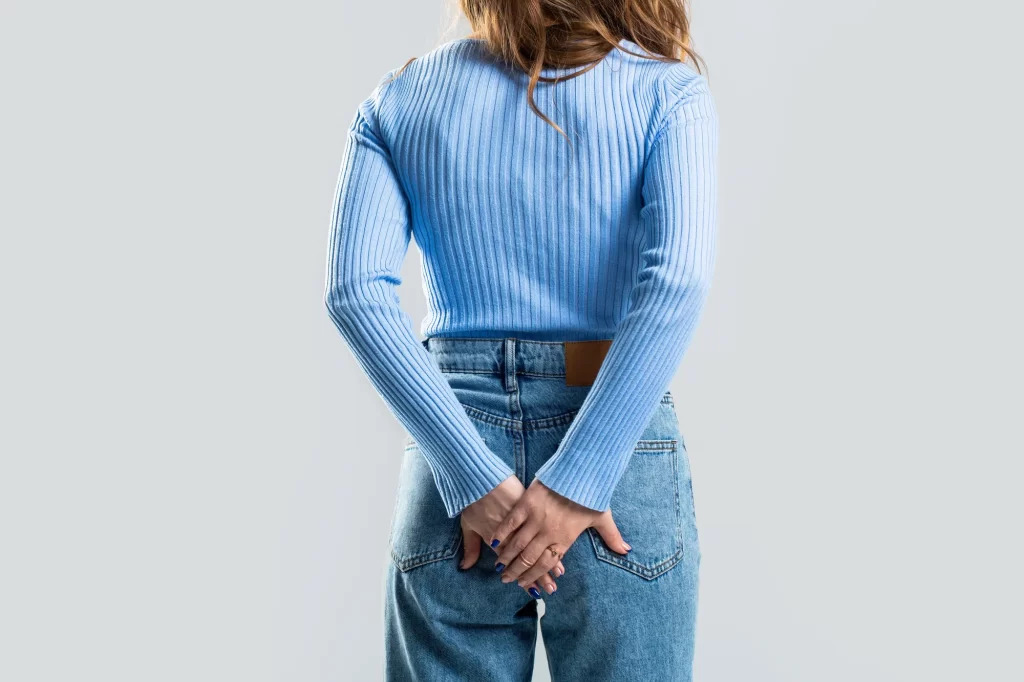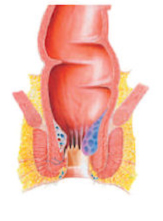
Piles, also known as hemorrhoids, are a common issue that affects both men and women. These swollen veins around the rectum and anus can lead to discomfort, pain, and sometimes bleeding. Understanding the different types of piles, their early symptoms, and how they affect men and women is crucial to getting the right treatment. Let’s talk about everything from identifying piles to how to treat them.
Types of Piles
Internal Piles
These are found inside the rectum and are not visible from the outside. They are usually painless but may cause bleeding, particularly during bowel movements.
External Piles
They develop outside the anus and are often painful. The area around the anus may swell, causing irritation and pain, especially while sitting or during bowel movements. External piles are more likely to lead to thrombosis, where blood clots inside the hemorrhoids, causing severe pain.
Prolapsed Hemorrhoids
These occur when internal hemorrhoids swell and extend outside the anus. They may retract on their own or need to be pushed back in manually.
Thrombosed Hemorrhoids
These happen when a clot forms inside hemorrhoid, causing severe pain, swelling, and inflammation.
Bleeding Hemorrhoids
Both internal and external hemorrhoids can bleed, usually during or after bowel movements. Bright red blood on toilet paper is a common sign.
Grade 1 Hemorrhoids

Mild internal haemorrhoids that don’t prolapse (extend outside the anus).
Grade 2 Hemorrhoids

These prolapse during bowel movements but retract on their own afterwards.
Grade 3 Hemorrhoids

These prolapse during bowel movements and need to be manually pushed back into place.
Early Symptoms of Piles in Females
Piles affect women just as much as men and early identification can help in managing the condition. Some common early symptoms in women include:
- Itching and Irritation
One of the first signs of piles is a persistent itching sensation around the anus. This occurs due to the swelling of blood vessels and can be quite uncomfortable. - Discomfort During Bowel Movements
Women may notice pain or a burning sensation during or after bowel movements, which can sometimes be accompanied by light bleeding. - Lumps Around the Anus
Small lumps near the anus may be a sign of external piles, especially if the area feels swollen or tender to the touch. - Increased Pressure from Pregnancy
Pregnant women are more susceptible to piles due to the increased pressure on the rectal veins during pregnancy. This makes identifying symptoms early crucial for prompt management.
How to Identify Piles in Both Male and Female

Though the symptoms of piles are generally the same for men and women, some signs may vary depending on individual circumstances, such as lifestyle, diet, or health conditions.
- Pain and Swelling
Both men and women experience discomfort due to the swelling of veins around the anus. However, men may experience more severe symptoms related to external piles due to prolonged sitting or heavy lifting. - Bleeding
Light bleeding during bowel movements is common in both men and women, especially in the case of internal piles. The blood is usually bright red and may appear on toilet paper or in the stool. - Straining
Chronic constipation or diarrhoea can lead to strain during bowel movements, making piles worse. This is a universal symptom experienced by anyone suffering from piles, regardless of gender.
The risk factors causing piles (haemorrhoids) generally include:

- Chronic constipation: Straining during bowel movements can put pressure on the veins in the rectum and anus.
- Diarrhea: Frequent loose stools can irritate and inflame the anal veins.
- Obesity: Excess weight puts additional pressure on the pelvic and rectal areas.
- Pregnancy: The pressure of carrying a baby and hormonal changes can contribute to haemorrhoids.
- Aging: Tissues in the rectum can weaken with age.
- Sitting for long periods: Prolonged sitting can put a strain on the veins in the anal region.
- Low-fibre diet: Lack of fibre leads to hard stools, which increases the likelihood of straining.
- Heavy lifting: Repeatedly lifting heavy objects can cause or worsen piles.
- Alcoholism: Excessive consumption of alcohol can cause piles.
Advice for Managing and Treating Piles!
Taking care of piles effectively requires lifestyle changes and medical treatments. Here’s how you can relieve the symptoms and prevent piles from worsening:
- Dietary Changes
One of the most effective ways to prevent and manage piles is through a high-fiber diet. Fibre helps soften the stool, making bowel movements smoother and less painful. Include fruits, vegetables, whole grains, and legumes in your daily diet and drink plenty of water to stay hydrated, which also helps prevent constipation. - Over-the-Counter Treatments
There are numerous creams, ointments, and suppositories available that can help reduce pain and swelling. These medications often contain hydrocortisone or witch hazel, both of which are effective in soothing the affected area. - Warm Baths
Soaking in a warm bath for 10–15 minutes, several times a day can help relieve discomfort and reduce swelling. This is especially beneficial for external piles, providing immediate relief from itching and pain. - Exercise Regularly
Regular physical activity can prevent constipation and reduce the pressure on rectal veins, lowering the risk of developing piles. Simple exercises like walking or swimming can be highly effective. - Avoid Straining
Straining during bowel movements puts pressure on the rectal veins and can aggravate piles. It is essential to avoid sitting on the toilet for prolonged periods and to use stool softeners if necessary.
Signs a Doctor Examines for Piles:
- Physical Examination: A doctor will first conduct a visual inspection to check for external piles or haemorrhoids.
- Digital Rectal Examination (DRE): The doctor may perform a rectal exam using a gloved finger to check for any swelling, lumps, or tenderness.
- Proctoscopy/Anoscopy: This involves using a small tube with a light to examine the inside of the anal canal, looking for internal piles, inflammation, or other signs.
Investigation Tests for Diagnosing Piles:
- Colonoscopy: This is a detailed examination of the colon and rectum using a long, flexible tube with a camera. It’s recommended when piles are suspected along with other digestive issues.
- Sigmoidoscopy: This is used to examine the rectum and lower part of the colon for internal piles or other abnormalities.
- Blood Tests: Although not common, blood tests may be performed to rule out anaemia caused by chronic bleeding from haemorrhoids.
Medical Treatments for Severe Cases
When piles do not respond to home treatments, medical intervention is necessary:
- Rubber Band Ligation
This procedure is used for internal piles. A small rubber band is placed around the base of the haemorrhoid, cutting off its blood supply. The hemorrhoid will then wither away and fall off within a week. - Sclerotherapy
A chemical solution is injected into the haemorrhoid, causing it to shrink. This method is commonly used for smaller internal piles. - Hemorrhoidectomy
For severe cases where other treatments have failed, surgical removal of haemorrhoids may be necessary. This is usually done under anaesthesia, and recovery can take a few weeks. - Stapled Hemorrhoidopexy
A less invasive option than a traditional hemorrhoidectomy, this procedure involves stapling hemorrhoid back into place and cutting off its blood supply.
Doctor’s Message!
Piles are a common but manageable condition. Early detection and lifestyle changes can significantly improve symptoms and prevent them from getting worse. If home remedies aren’t effective, consulting a doctor at Aadhya 9 Hospital for medical treatment is crucial to avoid complications. Remember, staying hydrated, maintaining a healthy diet, and avoiding prolonged sitting are simple yet powerful ways to prevent piles from affecting your quality of life!
